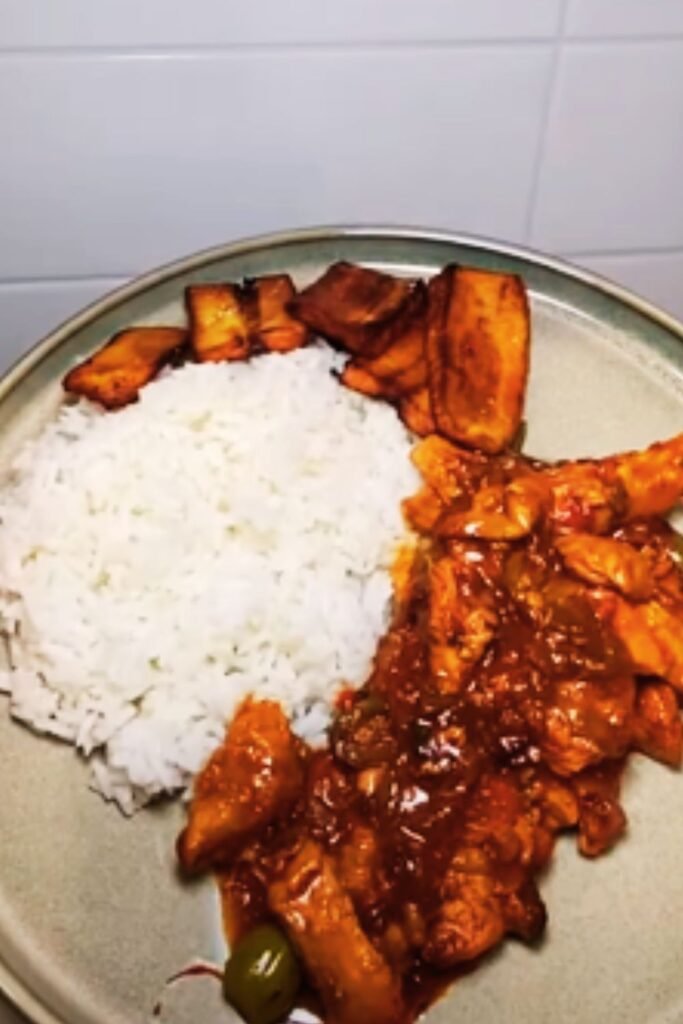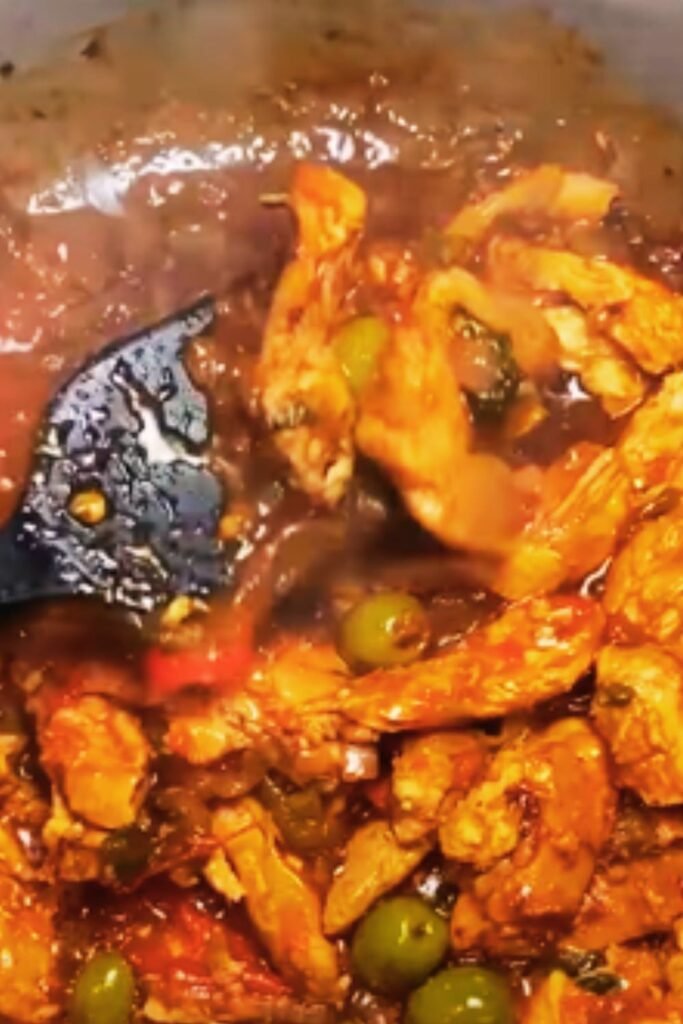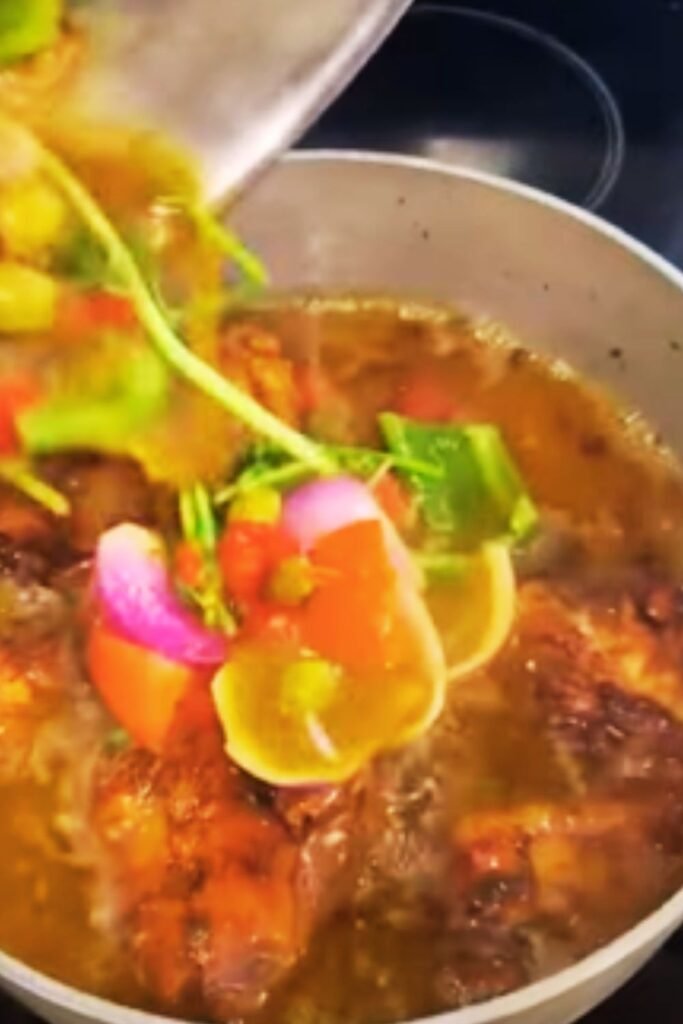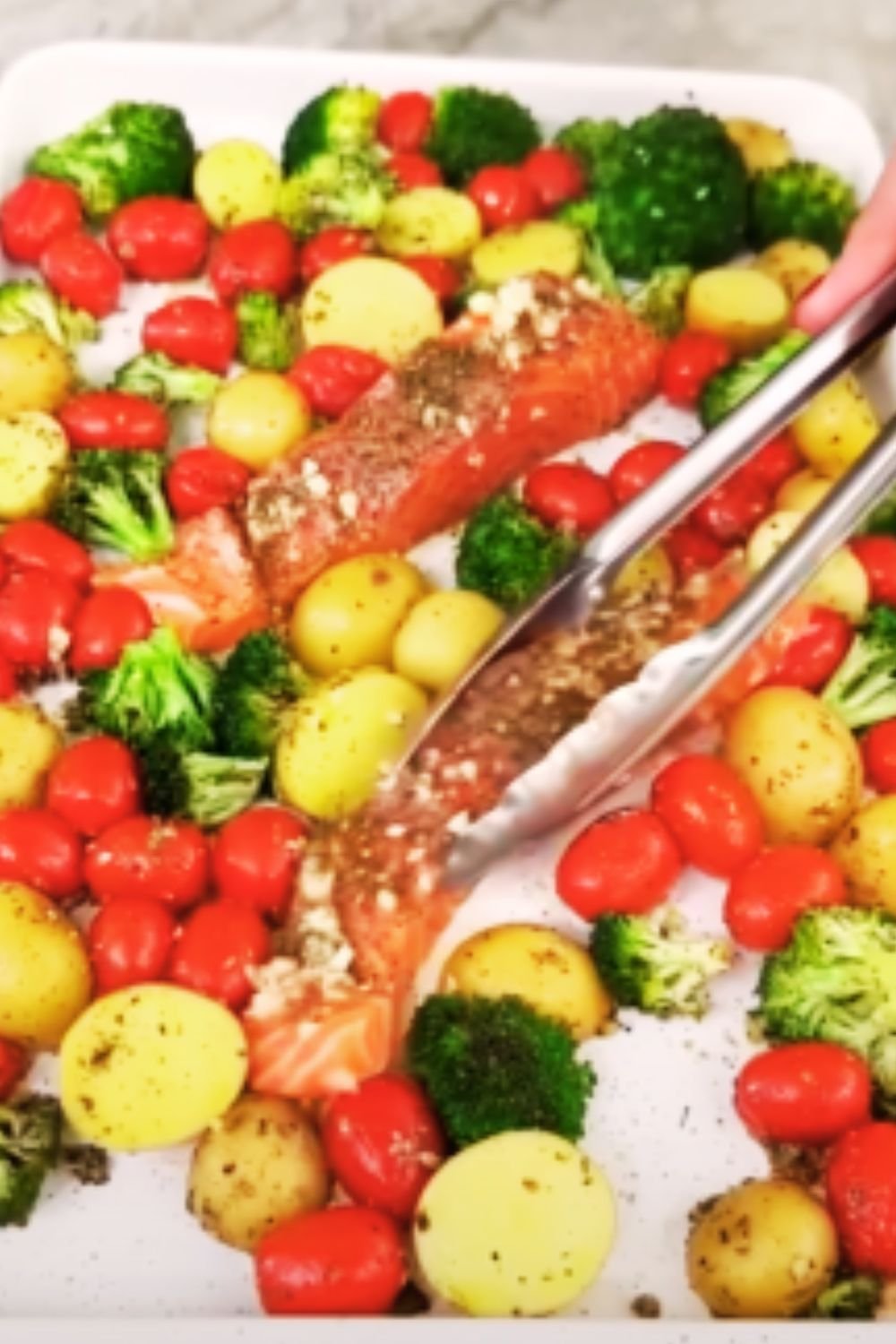There’s something magical about the way Dominican Pollo Guisado fills your home with an aroma that takes you straight to the heart of the Caribbean. I’ve spent years perfecting this classic dish, and today I’m thrilled to share my foolproof recipe for this beloved Dominican braised chicken. As someone who grew up watching my grandmother transform simple ingredients into this mouthwatering masterpiece, I can tell you that the secret lies in the marinade and slow cooking process that allows the flavors to meld together in perfect harmony.
What Makes Dominican Pollo Guisado Special?
Dominican Pollo Guisado, or braised chicken stew, stands out from other chicken dishes because of its unique combination of vibrant seasonings and cooking technique. Unlike other chicken stews from neighboring Caribbean islands, the Dominican version specifically employs a technique called “sofrito” as its flavor base and includes ingredients like olives and capers that reflect the Spanish influence on Dominican cuisine.
The dish represents the beautiful fusion of Spanish, African, and Taíno influences that characterize Dominican cooking. When done right, the chicken becomes incredibly tender, practically falling off the bone, while swimming in a sauce so delicious you’ll want to soak up every last drop with rice or bread.
The Essential Ingredients
Before we dive into the cooking process, let’s talk about the ingredients that make this dish authentically Dominican:
Dominican cooking relies heavily on what locals call the “holy trinity” of seasonings: oregano, garlic, and bitter orange (naranja agria). If you can’t find bitter orange juice, don’t worry – I’ll share a perfect substitute below.
For the Marinade:
- 3 lbs chicken pieces (traditionally dark meat with bones)
- 6 cloves garlic, minced
- 1 tablespoon dried oregano
- 1 tablespoon fresh lime juice
- 2 tablespoons bitter orange juice (or 1 tablespoon each of orange juice and lime juice)
- 1 tablespoon white vinegar
- 1 tablespoon olive oil
- 1 tablespoon adobo seasoning
- 1 teaspoon ground black pepper
- 1½ teaspoons salt (adjust to taste)
- 1 chicken bouillon cube, crushed
For the Braising Process:
- 3 tablespoons vegetable oil
- 1 large red onion, sliced
- 1 large bell pepper, sliced
- 1 cup tomato sauce
- 2 cups chicken broth
- 2 bay leaves
- 10 green olives (preferably stuffed with pimientos)
- 1 tablespoon capers
- ¼ cup fresh cilantro, chopped
- 2 tablespoons fresh parsley, chopped
- 1 small carrot, sliced (optional, but adds sweetness)
- 2 small potatoes, cubed (traditional addition)
The Art of Dominican Seasoning
In Dominican cuisine, proper seasoning is everything, and there’s even a term for it – “sazón.” This isn’t just about sprinkling salt and pepper. Instead, it’s a layered approach to building flavor, starting with a good marinade.
Creating the Perfect Marinade
The marinade for Pollo Guisado needs time to work its magic, so patience is key here. I always recommend marinating the chicken for at least 2 hours, but if you can leave it overnight, you’ll be rewarded with incredibly flavorful meat.
- Start by cleaning the chicken pieces. In Dominican tradition, this often involves washing with lime or bitter orange and vinegar. Pat the chicken dry afterward.
- Create a paste by mashing garlic, oregano, salt, pepper, and bouillon together. This can be done with a mortar and pestle (pilón) for a more authentic approach, or simply mix them well in a bowl.
- Add the citrus juices, olive oil, vinegar, and adobo seasoning to the paste and mix thoroughly.
- Place the chicken pieces in a large bowl, pour the marinade over them, and work the mixture into the meat, ensuring every piece is well-coated.
- Cover the bowl with plastic wrap and refrigerate for at least 2 hours, preferably overnight.

Cooking Process: The Dominican Way
When it comes to cooking Pollo Guisado, patience is your greatest ally. This dish isn’t meant to be rushed. The slow braising process allows the flavors to develop fully while tenderizing the meat.
Step 1: Browning the Chicken
- Remove the marinated chicken from the refrigerator about 30 minutes before cooking to bring it closer to room temperature.
- Heat vegetable oil in a large, heavy-bottomed pot or Dutch oven over medium-high heat.
- Working in batches to avoid overcrowding, brown the chicken pieces on all sides, about 3-4 minutes per side. The goal here isn’t to cook the chicken through but to develop a flavorful crust. Reserve the marinade.
- Transfer the browned chicken to a plate and set aside.
Step 2: Creating the Sofrito Base
The sofrito is the aromatic base that gives Dominican dishes their distinctive flavor profile:
- In the same pot (don’t clean it – those browned bits are flavor gold!), add a bit more oil if needed, then add the sliced onions and bell peppers.
- Sauté the vegetables until they soften and the onions become translucent, about 5 minutes. This is your sofrito.
- Pour in the reserved marinade and cook for 1-2 minutes, stirring constantly to scrape up any browned bits from the bottom of the pot.
Step 3: The Braising Magic
- Return the browned chicken to the pot, along with any accumulated juices.
- Add the tomato sauce, chicken broth, bay leaves, olives, and capers. The liquid should come about halfway up the chicken pieces.
- Bring the mixture to a boil, then reduce heat to low, cover the pot, and simmer for about 30 minutes.
- Add the cubed potatoes and sliced carrots (if using), then continue to simmer for another 15-20 minutes until the potatoes are tender and the chicken is fully cooked, practically falling off the bone.
- In the last 5 minutes of cooking, stir in most of the fresh cilantro and parsley, reserving some for garnish.
Step 4: Finalizing the Sauce
- Once the chicken is cooked through, if you’d like a thicker sauce, remove the chicken pieces and increase the heat to medium. Let the sauce reduce for about 5-10 minutes, stirring occasionally.
- Taste and adjust seasoning if necessary, then return the chicken to the pot and turn to coat with the sauce.
- Garnish with the remaining fresh herbs just before serving.

Serving Suggestions
In the Dominican Republic, Pollo Guisado is almost always served with white rice and habichuelas (stewed beans), creating what locals call “La Bandera Dominicana” (The Dominican Flag) because it represents the colors of the nation’s flag.
Other authentic sides include:
- Tostones (twice-fried green plantains)
- Maduros (sweet fried ripe plantains)
- Avocado slices
- Dominican-style green salad with simple vinaigrette
For a complete meal, I recommend:
| Main Dish | Side Options | Garnishes |
|---|---|---|
| Pollo Guisado | White Rice | Fresh Cilantro |
| Red or Black Beans | Lime Wedges | |
| Tostones or Maduros | Sliced Avocado | |
| Simple Green Salad |
Tips for the Perfect Dominican Pollo Guisado
Through years of making this dish, I’ve gathered some insights that make all the difference:
- Choose the right chicken parts: Traditional Dominican Pollo Guisado uses bone-in, skin-on chicken pieces, preferably dark meat like thighs and drumsticks. They’re more flavorful and won’t dry out during the braising process.
- Don’t rush the browning: Properly browning the chicken creates the foundation for the deep flavors in this dish. Take your time with this step.
- Keep the bones in: The bones contribute significant flavor to the braising liquid. Remove them before serving if preferred, but cook with them in.
- Adjust the liquid level: The amount of braising liquid can be adjusted based on how saucy you want the final dish to be. Some Dominican families make a very saucy version to spoon over rice, while others prefer a thicker, more concentrated sauce.
- Rest before serving: Like many stews, Pollo Guisado tastes even better the next day. If you can, make it ahead and reheat gently before serving.
Common Variations Across the Dominican Republic
While I’ve shared what I consider the classic version of Dominican Pollo Guisado, it’s worth noting that variations exist across different regions and families:
- In some coastal areas, a splash of coconut milk is added to the sauce for a subtle sweetness.
- Northern regions might include more root vegetables like yuca or yautía.
- Some families add a hint of sweetness with a small amount of sugar or a splash of white wine during the braising process.
- Heat levels vary by household – some add a scotch bonnet or habanero pepper for extra kick.

Health Benefits of Dominican Pollo Guisado
Beyond being delicious, this dish offers several nutritional benefits:
| Ingredient | Health Benefit |
|---|---|
| Chicken | High-quality protein source, essential for muscle maintenance and growth |
| Garlic | Contains compounds with antimicrobial and antioxidant properties |
| Bell Peppers | Rich in vitamins A and C, antioxidants that support immune function |
| Tomatoes | Source of lycopene, linked to heart health and cancer prevention |
| Herbs (Cilantro, Parsley) | Provide vitamins A, K, and C, plus compounds with anti-inflammatory effects |
| Olives | Contain heart-healthy monounsaturated fats and antioxidants |
When paired with rice and beans, you get a complete protein meal with a good balance of carbohydrates, proteins, and healthy fats.
Making It Your Own: Customization Ideas
While I’m a purist at heart when it comes to traditional Dominican dishes, I recognize that adaptations are sometimes necessary or desired:
- For a lighter version: Use skinless chicken pieces and increase the vegetables.
- For a quicker cook: Cut chicken into smaller pieces to reduce cooking time.
- For extra vegetables: Add diced zucchini, peas, or corn in the last 10 minutes of cooking.
- For a one-pot meal: Add rice directly to the pot about 20 minutes before the end of cooking, adding extra liquid as needed.
Common Questions About Dominican Pollo Guisado
Throughout my years of sharing this recipe, I’ve encountered several recurring questions:
Q: Can I use boneless chicken breast instead of bone-in thighs?
While not traditional, you certainly can. Just be aware that breast meat cooks faster and can dry out more easily. If using boneless chicken breast, reduce the overall cooking time to about 25-30 minutes total, and check frequently for doneness.
Q: I can’t find bitter orange juice. What’s the best substitute?
The best substitute is a mixture of equal parts regular orange juice and lime juice. This combination mimics the sweet-tart profile of bitter orange reasonably well. In a pinch, just lime juice will work too, though the flavor profile will be slightly different.
Q: Can I make this in a slow cooker or Instant Pot?
Absolutely! For slow cooker: Brown the chicken and make the sofrito as directed, then transfer everything to a slow cooker and cook on low for 6-7 hours or high for 3-4 hours. For Instant Pot: Use the sauté function for browning and making the sofrito, then pressure cook for about 15 minutes with a natural release.
Q: How spicy is this dish?
Traditional Dominican Pollo Guisado is flavorful but not spicy-hot. The heat level comes mainly from black pepper and sometimes a small amount of hot pepper. You can adjust the heat level by adding a scotch bonnet or habanero pepper (left whole for mild heat or chopped for more intensity).
Q: How do I store leftovers?
Leftovers can be refrigerated in an airtight container for up to 3 days. The flavor actually improves overnight as the seasonings continue to meld. You can also freeze portions for up to 3 months. Thaw overnight in the refrigerator and reheat gently on the stovetop or microwave.
A Cultural Treasure
Dominican Pollo Guisado isn’t just a meal; it’s a cultural institution. Sunday family gatherings throughout the Dominican Republic often feature this dish as the centerpiece. There’s something about the process of making it – the slow, deliberate steps, the building of flavors, the fragrant simmer that fills the home – that embodies Dominican hospitality and family values.
When I make this dish, I’m not just preparing food; I’m participating in a tradition that spans generations and connects me to my cultural heritage. Every family has their own subtle variations, their own special touches that make their version unique. That’s the beauty of dishes like this – they’re living recipes that evolve and adapt while maintaining their essential character.
I encourage you to start with this authentic base recipe, then gradually make it your own. Perhaps your version will become a treasured family recipe passed down to future generations. After all, that’s how cultural culinary traditions endure – through loving preparation and sharing across time.

Final Thoughts
Dominican Pollo Guisado represents the best of Caribbean cooking – simple ingredients transformed through skilled technique and balanced seasoning into something truly extraordinary. It’s comfort food at its finest, nourishing both body and soul.
The next time you’re looking for a dish that will fill your home with incredible aromas and satisfy even the most discerning palates, I hope you’ll give this recipe a try. Take your time with each step, enjoy the process, and most importantly, share it with people you love. That’s the Dominican way, and I promise, you’ll taste the difference.
¡Buen provecho!
| Prep Time | Cook Time | Marinating Time | Total Time | Servings |
|---|---|---|---|---|
| 20 minutes | 1 hour | 2+ hours | 3+ hours | 4-6 |


